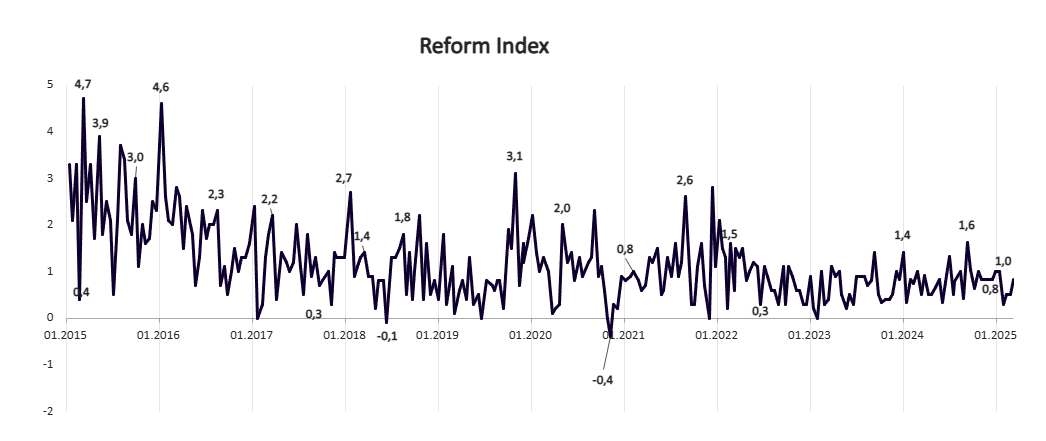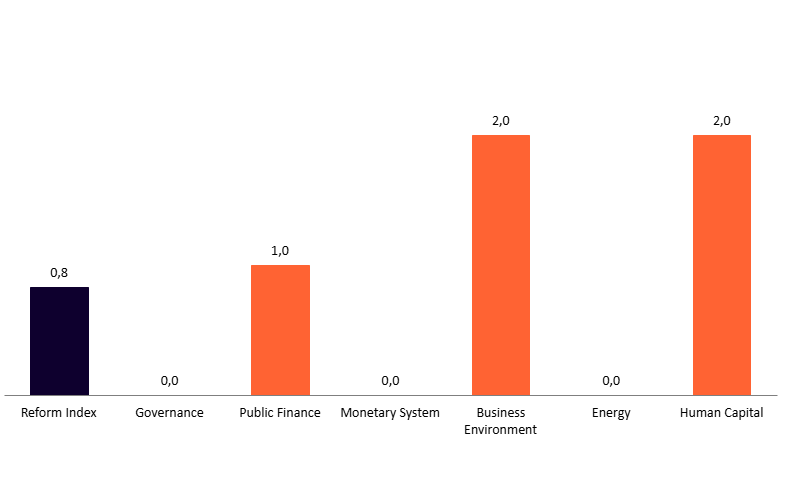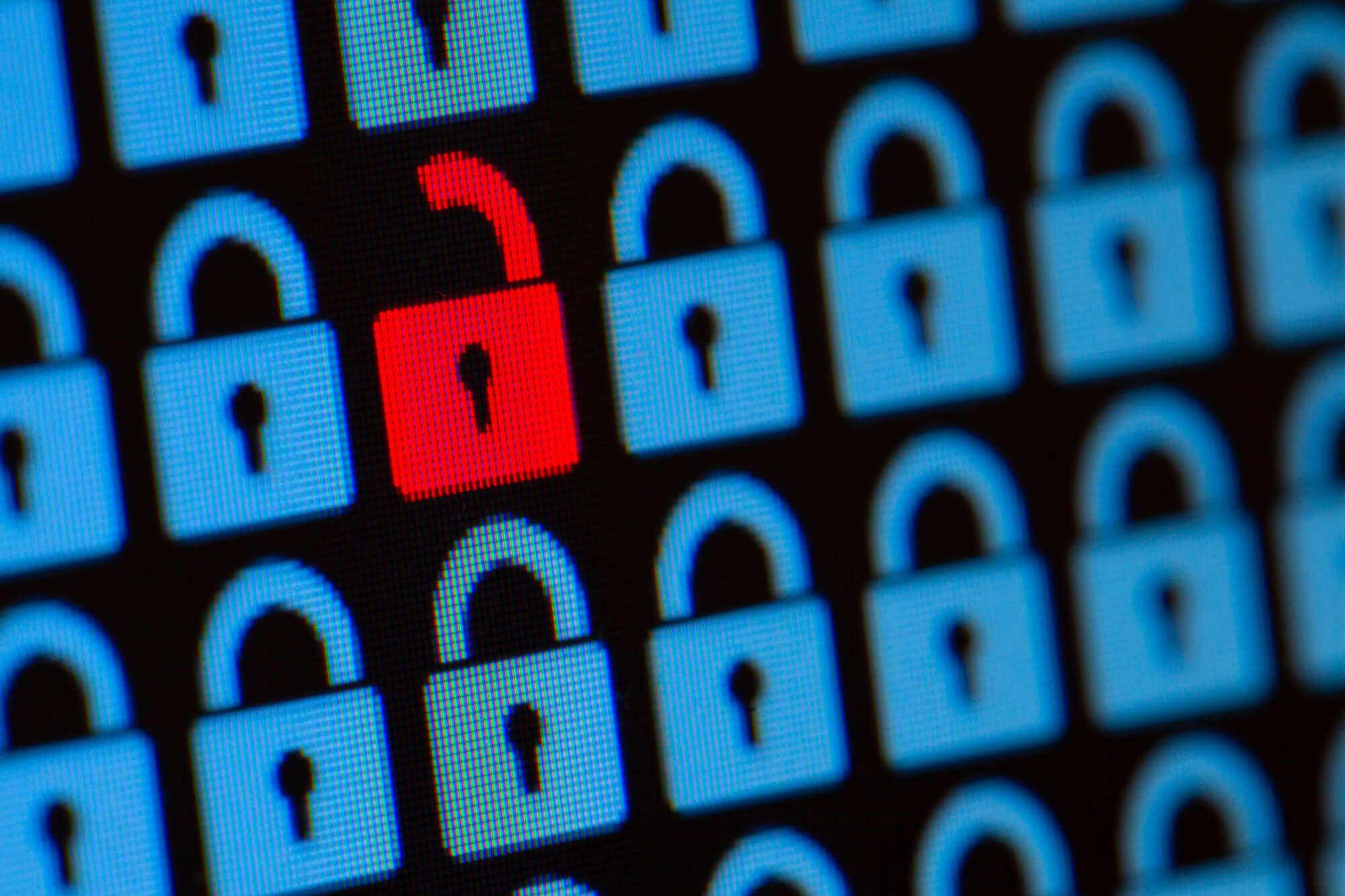Issue 259 of the Reform Index features two main reforms. First, a government resolution now allows the state to transfer weapons design documentation to private companies. This measure falls under the “Business Environment” category and received +2 points from experts. Second, a government-backed law that improves the procedures for registering and pricing medicines — and aims to limit monopolistic influence in the pharmaceutical market—also earned +2 points. It was credited under two categories: “Business Environment” (+1 point) and “Human Capital” (+1 point).
Issue 259 of the Reform Index covers five reforms introduced between February 24 and March 9, with the overall Index score rising to 0.8 points (on a scale from -5 to +5). The previous issue recorded a score of 0.5 points.
Graph 1. Dynamics of the Reform Index

Graph 2. Values of the Reform Index and its Components in the Current Assessment Round

Design documentation for Ukrainian weapons can now be transferred to private enterprises, +2 points
Cabinet Resolution No. 279 abolishes the state monopoly on intellectual property related to serial military production. From now on, if state-owned defense enterprises are unable to meet the required production volumes, the Ministry of Defense can initiate the transfer of design documentation to other manufacturers, regardless of ownership form.
This means that private companies can participate in the serial production of defense equipment, provided they have the necessary resources and experience, no outstanding debts, and no ties to the aggressor state. These new manufacturers are responsible for independently funding both the launch of mass production and the testing process.
Information about the Reforms Index project, the list of Index experts and the database of the regulations assessed are available here.
Expert commentary
Public Union “League of Defense Companies of Ukraine”
“The transfer of design documentation to the private defense sector is an important and promising step toward strengthening Ukraine’s defense capabilities.
Currently, Ukraine’s defense industry is operating at only 40–60% capacity. There is a significant shortage of the necessary weapons and military equipment (WME) to supply the front, especially amid escalating external threats and the challenges of the near future. At the same time, private defense manufacturers have highly skilled personnel, strong expertise, well-established production and logistics, and demonstrate high adaptability and flexibility.
Proactive implementation of this resolution will allow the state to:
- Rapidly scale up the production of critically needed WME, spare parts, and other equipment;
- Engage a diverse pool of producers, thereby reducing the risk of supply disruptions, fostering competition in the sector, and ultimately improving product quality, reducing costs, and accelerating order fulfillment;
- Elevate the organizational level of Ukraine’s defense industry and synchronize it with similar initiatives under the European Defence Fund (EDF), thereby opening new opportunities for attracting resources to the defense sector.
The private sector, in turn, will gain access to government contracts and advanced technologies. This will promote economic growth, increase budget revenues, and create new jobs. History shows that the development of the defense industry has a direct positive impact on a country’s overall economic growth.
However, some risks may arise during implementation:
- Resistance from state-owned defense enterprises;
- Increased oversight and scrutiny by law enforcement;
- The need for strict compliance with state secrecy regulations;
- The need for private companies to invest in new production capacities.
However, there are already instruments in place to mitigate these risks, including Cabinet of Ministers Resolution No. 1288 of November 5, 2024, ’Certain Issues of Financial State Support,’ as well as initiatives by European partners aimed at investing in Ukraine and establishing joint ventures.
In short, the resolution aligns with modern trends in democratic countries — decentralizing WME production, involving the private sector, and enhancing industrial sovereignty. It marks an important step toward harmonizing Ukraine’s defense policy with European practices.”
Oksana Kuziakiv, Executive Director at the Institute for Economic Research
“In response to the need to scale up weapons production during martial law, the Cabinet of Ministers adopted Resolution No. 279, establishing the procedure for transferring design documentation to other business entities. This will allow for the use of additional production capacities when primary manufacturers are already operating at 75–100% capacity. The resolution outlines:
- The procedure for selecting enterprises by the Ministry of Strategic Industries and the mandatory assessment of their capabilities by the state customer;
- The mandatory presence of state customer representatives at the enterprise;
- The conclusion of a contract between the holder of the technical drawings and the new manufacturer;
- A defined list of provisions to be included in the contract, such as protection of intellectual property rights, prohibition of transferring drawings to third parties, conditions for the return of documentation, and the possibility of involving the holder’s personnel in the production launch.
Implementing the resolution involves at least three key stakeholder groups, each with its own set of interests. Original developers or manufacturers seek to protect their intellectual property rights, preserve their market positions, and avoid quality degradation resulting from uncontrolled production. New manufacturers, by contrast, are interested in broader access to state defense contracts, technological growth, and participation in major national projects. The government’s goal is to rapidly scale up arms production to strengthen national defense capabilities.
One of the main challenges in implementing the resolution is the mistrust among documentation holders. Despite the contractual safeguards in place, there are ongoing concerns about the effectiveness of enforcement mechanisms. These concerns include the risk of unauthorized copying or modification of technical drawings, as well as increased competition arising from the use of transferred technologies. Ensuring timely oversight may also be difficult due to the absence of specialized procedures and a clearly designated oversight body. Another major risk lies in the difficulty of proving contractual violations — especially in cases involving technical modifications or breaches of intellectual property protections. In practice, detecting and verifying such violations can be complex, potentially discouraging documentation holders from cooperating.
Overall, the resolution represents an important step toward rapidly expanding the country’s defense production capacity. However, its successful implementation depends on recognizing the differing interests of stakeholders and establishing reliable mechanisms for oversight, protection, and incentives to foster cooperation. The effectiveness and long-term scalability of arms production during wartime will largely depend on the success of this approach.”
New rules for drug pricing, +2 points
Ukraine will establish a National Drug Price Catalogue that will list manufacturer or importer-declared prices for medicines. These prices must not exceed the average of the three lowest prices for the same drug in reference countries designated by the Ministry of Health (Poland, Slovakia, Czech Republic, Latvia, Hungary, Moldova, Romania, and Bulgaria). Pharmacies will be prohibited from selling medicines at prices higher than those listed in the catalogue (including markups and VAT) and from selling products not included in the catalogue. The catalogue will be updated monthly, while listed prices will be reviewed every six months. Prices may also be adjusted if the exchange rate of the hryvnia to the US dollar or euro shifts by more than 5%.
Electronic prescriptions must include information on the lowest-priced drug with the same active ingredient from the catalogue.
To promote greater competition in the pharmaceutical market, the new law limits how much a manufacturer can sell to a single distributor: no more than 20% of the annual supply of a specific drug may go to one buyer or affiliated companies. Additionally, only companies manufacturing or importing a drug may advertise or promote it at the point of sale (i.e., in pharmacies). Outside pharmacy settings, drug advertising is only permitted by companies that have no ownership or control ties to pharmacies.
Expert commentary
Inna Maslenchuk, expert in pharmaceutical supply and healthcare financing, state expert at the Ministry of Health of Ukraine (2018–2021):
“Law No. 4239-IX introduces a number of systemic changes in the state registration of medicinal products, which could significantly transform Ukraine’s pharmaceutical market. Most notably, it establishes a unified electronic registry of medicines, enabling full traceability of each product — from composition and manufacturer to registration status. This move enhances transparency, strengthens quality control, and reduces the risk of counterfeiting. The law also introduces a fast-track registration pathway for drugs already approved in countries with high regulatory standards, potentially accelerating patient access to innovative treatments in Ukraine.
At the same time, these new requirements present challenges for businesses —particularly smaller players who may struggle to adapt to new procedures and technical demands. Without adequate IT infrastructure and clear guidance, there is a risk of delays in drug registration and supply. The success of these reforms will largely depend on transparent implementation, open dialogue with market participants, and the government’s willingness to provide support during the transition period.”
Reform Index from VoxUkraine aims to provide a comprehensive assessment of reform efforts by Ukraine’s authorities. The Index is based on expert assessments of changes in the regulatory environment in six areas: Governance, Public Finance, Monetary system, Business Environment, Energy, Human Capital. Information about the Reforms Index project, the list of Index experts and the database of the regulations assessed are available here.
Attention
The author doesn`t work for, consult to, own shares in or receive funding from any company or organization that would benefit from this article, and have no relevant affiliations



